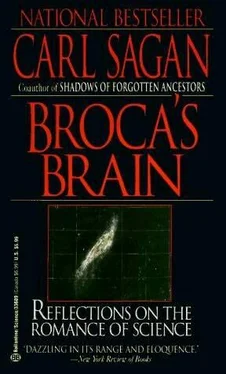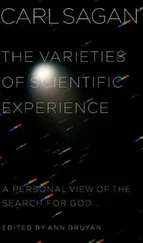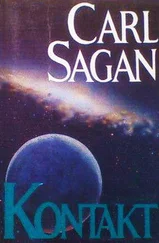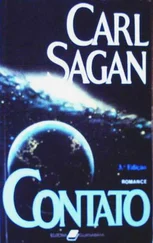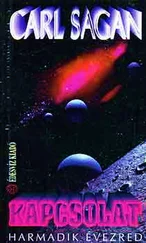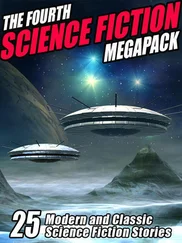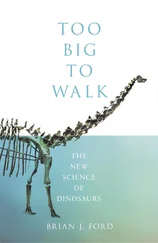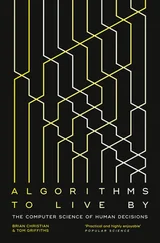Carl Sagan - Broca's Brain - The Romance of Science
Здесь есть возможность читать онлайн «Carl Sagan - Broca's Brain - The Romance of Science» весь текст электронной книги совершенно бесплатно (целиком полную версию без сокращений). В некоторых случаях можно слушать аудио, скачать через торрент в формате fb2 и присутствует краткое содержание. Жанр: Физика, на английском языке. Описание произведения, (предисловие) а так же отзывы посетителей доступны на портале библиотеки ЛибКат.
- Название:Broca's Brain: The Romance of Science
- Автор:
- Жанр:
- Год:неизвестен
- ISBN:нет данных
- Рейтинг книги:3 / 5. Голосов: 1
-
Избранное:Добавить в избранное
- Отзывы:
-
Ваша оценка:
- 60
- 1
- 2
- 3
- 4
- 5
Broca's Brain: The Romance of Science: краткое содержание, описание и аннотация
Предлагаем к чтению аннотацию, описание, краткое содержание или предисловие (зависит от того, что написал сам автор книги «Broca's Brain: The Romance of Science»). Если вы не нашли необходимую информацию о книге — напишите в комментариях, мы постараемся отыскать её.
Broca's Brain: The Romance of Science — читать онлайн бесплатно полную книгу (весь текст) целиком
Ниже представлен текст книги, разбитый по страницам. Система сохранения места последней прочитанной страницы, позволяет с удобством читать онлайн бесплатно книгу «Broca's Brain: The Romance of Science», без необходимости каждый раз заново искать на чём Вы остановились. Поставьте закладку, и сможете в любой момент перейти на страницу, на которой закончили чтение.
Интервал:
Закладка:
CHAPTER 7
BRANDT, J. C., MARAN, S. P., WILLIAMSON, R., HARRINGTON, R., COCHRAN, C., KENNEDY, M., KENNEDY, W., and CHAMBERLAIN, V., “Possible Rock Art Records of the Crab Nebula Supernova in the Western United States.” Archaeoastronomy in Pre-Columbian America , A. F. Aveni, ed. Austin, University of Texas Press, 1974.
BRANDT, J. C., MARAN, S. P., and STECHER, T. P., “Astronomers Ask Archaeologists Aid.” Archaeology , 21: 360 (1971).
BROWN, H., “Rare Gases and the Formation of the Earth’s Atmosphere,” in Kuiper (1949).
CAMPBELL, J., The Mythic Image. Princeton, Princeton University Press, 1974. (Second printing with corrections, 1975.)
CONNES, P., CONNES, J., BENEDICT, W. S., and KAPLAN, L. D., “Traces of HC l and HF in the Atmosphere of Venus.” Ap. J. , 147: 1230 (1967).
COVEY, C., Anthropological Journal of Canada , 13: 2-10 (1975).
DE CAMP, L. S., Lost Continents: The Atlantis Theme. New York, Ballantine Books, 1975.
DODD, EDWARD, Polynesian Seafaring. New York, Dodd, Mead, 1972.
EHRLICH, MAX, The Big Eye. New York, Doubleday, 1949.
GALANOPOULOS, ANGELOS G., “Die ăagyptischen Plagen und der Auszug Israels aus geologischer Sicht.” Das Altertum , 10: 131-137 (1964).
GOULD, S. J., “Velikovsky in Collision.” Natural History (March 1975), 20-26.
KUIPER, G. P., ed., The Atmospheres of the Earth and Planets , 1st ed. Chicago, University of Chicago Press, 1949.
LEACH, E. R., “Primitive Time Reckoning,” in The History of Technology , edited by C. Singer, E. J. Holmyard, and Hall, A. R. London, Oxford University Press, 1954.
LECAR, M., and FRANKLIN, F., “On the Original Distribution of the Asteroids.” Icarus , 20: 422-436 (1973).
MAROV, M. YA., “Venus: A Perspective at the Beginning of Planetary Exploration.” Icarus , 16: 415-461 (1972).
MAROV, M. YA., AVDUEVSKY, V., BORODIN, N., EKONOMOV, A., KERZHANOVICH, V., LYSOV, V., MOSHKIN, B., ROZHDESTVENSKY, M., and RYABOV, O., “Preliminary Results on the Venus Atmosphere from the Venera 8 Descent Module.” Icarus , 20: 407-421 (1973).
MEEUS, J., “Comments on The Jupiter Effect.” Icarus , 26: 257-267 (1975).
NEUGEBAUER, O., “Ancient Mathematics and Astronomy,” in The History of Technology , edited by C. Singer, E. J. Holmyard, and Hall, A. R. London, Oxford University Press, 1954.
ÖPIK, ERNST J., “Collision Probabilities with the Planets and the Distribution of Interplanetary Matter.” Proceedings of the Royal Irish Academy , Vol. 54 (1951), 165-199.
OWEN, T. C., and SAGAN, C., “Minor Constituents in Planetary Atmospheres: Ultraviolet Spectroscopy from the Orbiting Astronomical Observatory.” Icarus , 16: 557-568 (1972).
POLLACK, J. B., “A Nongray CO 2-H 2O Greenhouse Model of Venus.” Icarus , 10: 314-341 (1969).
POLLACK, J. B., ERICKSON, E., WITTEBORN, F., CHACKERIAN, C., SUMMERS, A., AUGASON, G., and CAROFF, L., “Aircraft Observation of Venus’ Near-infrared Reflection Spectrum: Implications for Cloud Composition.” Icarus , 23: 8-26 (1974).
SAGAN, C., “The Radiation Balance of Venus.” California Institute of Technology, Jet Propulsion Laboratory, Technical Report 32-34, 1960.
SAGAN, C., “The Planet Venus.” Science , 133: 849 (1961).
SAGAN, C., The Cosmic Connection. New York, Doubleday, 1973.
SAGAN, C., “Erosion of the Rocks of Venus.” Nature , 261: 31 (1976).
SAGAN, C., and PAGE T., eds., UFOs: A Scientific Debate. Ithaca, N. Y., Cornell University Press, 1973; New York, Norton, 1974.
SILL, G., “Sulfuric Acid in the Venus Clouds.” Communications Lunar Planet Lab., University of Arizona, 9: 191-198 (1972).
SPITZER, LYMAN, and BAADE, WALTER, “Stellar Populations and Collisions of Galaxies.” Ap. J. , 113: 413 (1951).
UREY, H. C., “Cometary Collisions and Geological Periods.” Nature , 242: 32-33 (1973).
UREY, H. C., The Planets. New Haven, Yale University Press, 1951.
VELIKOVSKY, I., Worlds in Collision. New York, Dell, 1965. (First printing, Doubleday, 1950.)
VELIKOVSKY, I., “Venus, a Youthful Planet.” Yale Scientific Magazine , 41: 8-11 (1967).
VITALLIANO, DOROTHY B., Legends of the Earth: Their Geologic Origins. Bloomington, Indiana University Press, 1973.
WILDT, R., “Note on the Surface Temperature of Venus.” Ap. J. , 91: 266 (1940).
WILDT, R., “On the Chemistry of the Atmosphere of Venus.” Ap. J. , 96: 312-314 (1942).
YOUNG, A. T., “Are the Clouds of Venus Sulfuric Acid?” Icarus , 18: 564-582 (1973).
YOUNG, L. D. G., and YOUNG, A. T., Comments on “The Composition of the Venus Cloud Tops in Light of Recent Spectroscopic Data.” Ap. J. , 179: L39 (1973).
APPENDICES TO CHAPTER 7
WE HERE CONSIDER the probability that a massive object of the sort considered by Velikovsky to be ejected from Jupiter might impact Earth. Velikovsky proposes that a grazing or near-collision occurred between this comet and the Earth. We will subsume this idea under the designation “collision” below. Consider a spherical object of radius R moving among other objects of similar size. Collision will occur when the centers of the objects are 2R distant. We may then speak of an effective collision cross section of σ = π(2R) 2= 4πR 2; this is the target area which the center of the moving object must strike in order for a collision to occur. Let us assume that only one such object (Velikovsky’s comet) is moving and that the others (the planets in the inner solar system) are stationary. This neglect of the motion of the planets of the inner solar system can be shown to introduce errors smaller than a factor of 2. Let the comet be moving at a velocity v and let the space density of potential targets (the planets of the inner solar system) be n. We will use units in which R is in centimeters (cm), σ is in cm 2, v is in cm/sec, and n is in planets per cm 3; n is obviously a very small number.
While comets have a wide range of orbital inclinations to the ecliptic plane, we will be making the most generous assumptions for Velikovsky’s hypothesis if we assume the smallest plausible value for this inclination. If there were no restriction on the orbital inclination of the comet, it would have equal likelihood of moving anywhere in a volume centered on the Sun and of radius r = 5 astronomical units (1 a.u. = 1.5 × 10 12cm), the semi-major axis of the orbit of Jupiter. The larger the volume in which the comet can move, the less likely is any collision of it with another object. Because of Jupiter’s rapid rotation, any object flung out from its interior will have a tendency to move in the planet’s equatorial plane, which is inclined by 1.2° to the plane of the Earth’s revolution about the Sun. However, for the comet to reach the inner part of the solar system at all, the ejection event must be sufficiently energetic that virtually any value of its orbital inclination, i, is plausible. A generous lower limit is then i = 1.2°. We therefore consider the comet to move (see diagram) in an orbit contained somewhere in a wedge-shaped volume, centered on the Sun (the comet’s orbit must have the Sun at one focus), and of half-angle i. Its volume is then (4/3)πr 3sin i = 4 × 10 40cm 3, only 2 percent the full volume of a sphere of radius r. Since in that volume there are (disregarding the asteroids) three or four planets, the space density of targets relevant for our problem is about 10 −40planets/cm 8. A typical relative velocity of a comet or other object moving on an eccentric orbit in the inner solar system might be about 20 km/sec. The radius of the Earth is R = 6.3 × 10 8cm, which is almost exactly the radius of the planet Venus as well.
Читать дальшеИнтервал:
Закладка:
Похожие книги на «Broca's Brain: The Romance of Science»
Представляем Вашему вниманию похожие книги на «Broca's Brain: The Romance of Science» списком для выбора. Мы отобрали схожую по названию и смыслу литературу в надежде предоставить читателям больше вариантов отыскать новые, интересные, ещё непрочитанные произведения.
Обсуждение, отзывы о книге «Broca's Brain: The Romance of Science» и просто собственные мнения читателей. Оставьте ваши комментарии, напишите, что Вы думаете о произведении, его смысле или главных героях. Укажите что конкретно понравилось, а что нет, и почему Вы так считаете.
